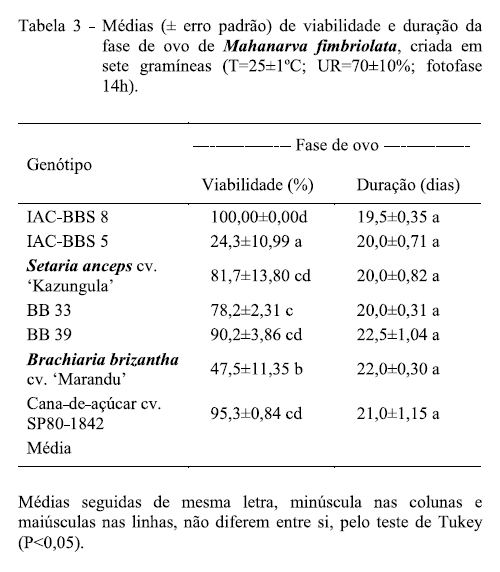Under controlled conditions, six forage grasses (Setaria anceps cv. 'Kazungula' and Brachiaria brizantha cv. 'Marandu'; and codified genotypes BB33, BB39; BBS 5 and BBS8), along with a control check (sugarcane cv. 'SP80-1842') were evaluated as to Mahanarva fimbriolata resistance. The following parameters have been evaluated: nymphal phase duration and mortality, sex ratio, pre-oviposition period, number of eggs per female, longevity, viability and embryonic period. The highest mortalities and longer nymphal periods occurred on BBS 8, cv. 'Marandu' and cv. 'Kazungula'. BBS5 also caused high nymph mortality, however with the shortest nymphal period. The lowest longevity and fecundity values were detected for BBS5 and BBS8, whereas the sugarcane control check revealed the highest one. As to embryonic phase viability, BBS 8 originated the highest values and BBS 5, the lowest ones. Among the tested plants, BBS 8 along with the cv. 'Marandu', proved to be the most resistant genetic material, both through antibiosis and/or nonpreference for feeding mechanism.
Cercopidae; host plant resistance; Gramineae; spittlebug





